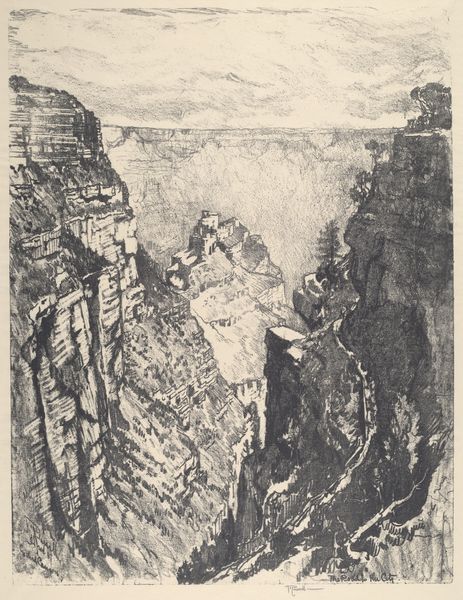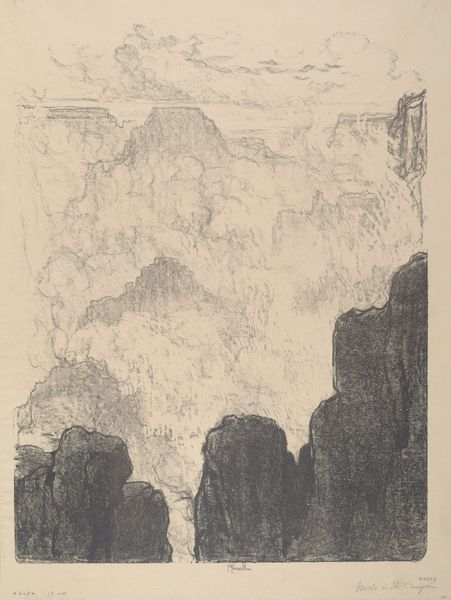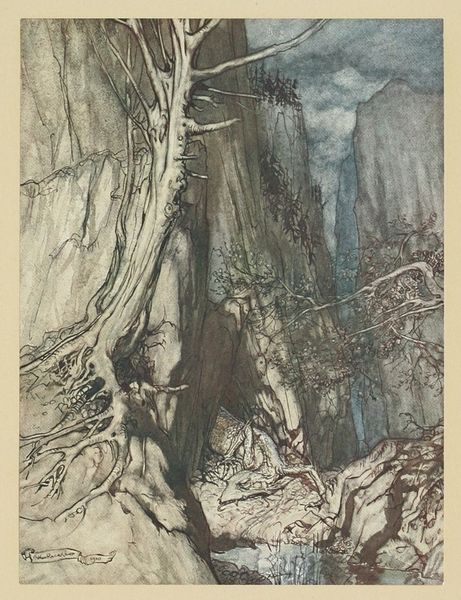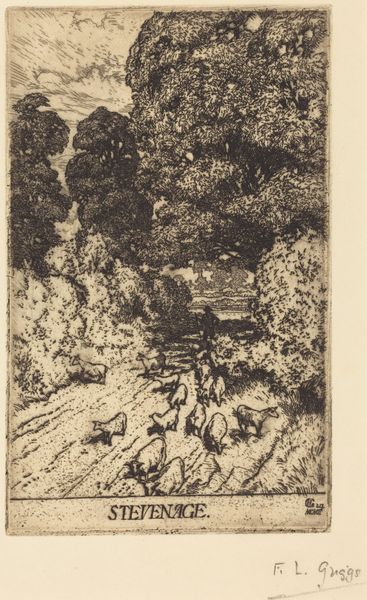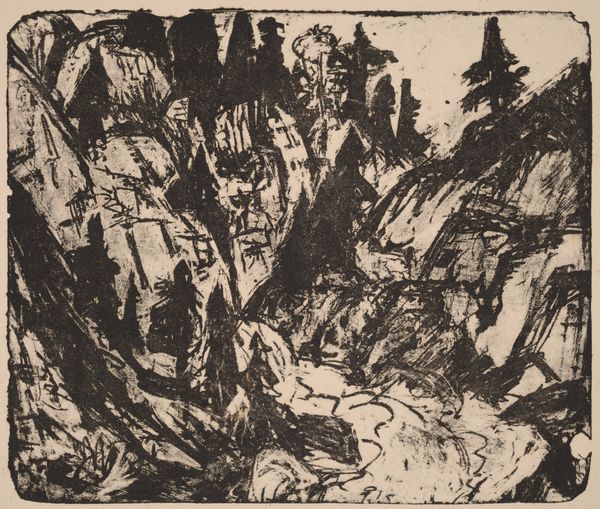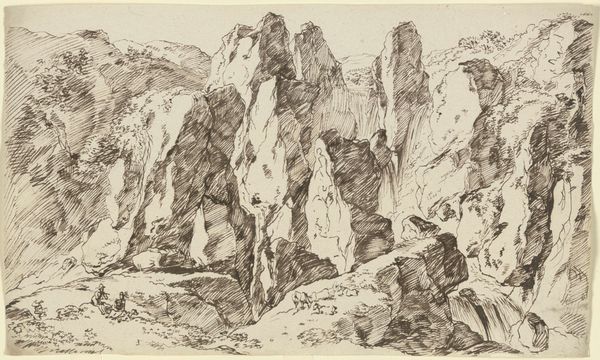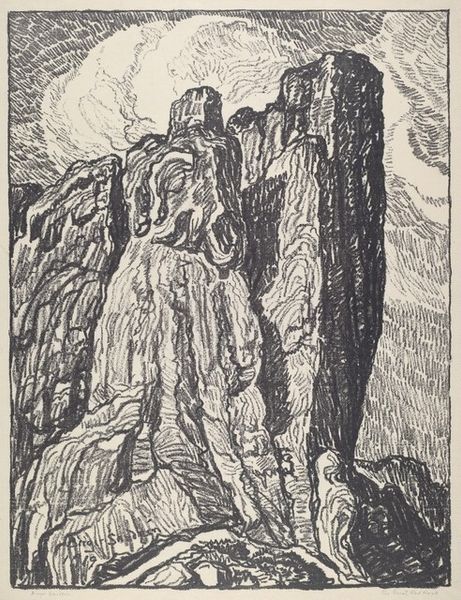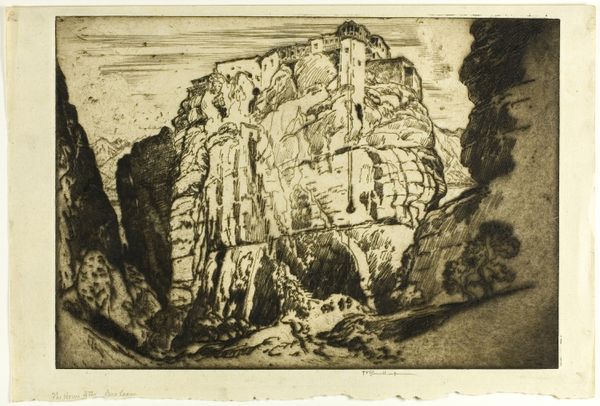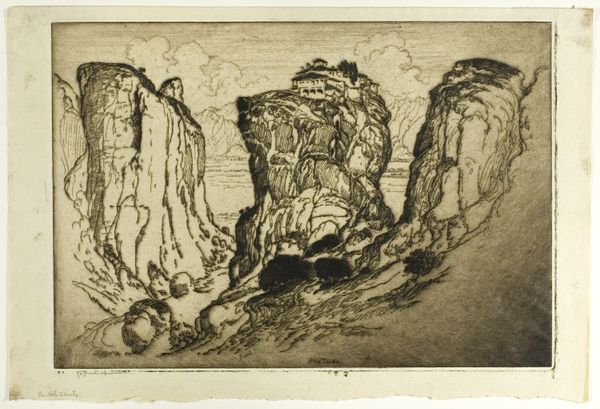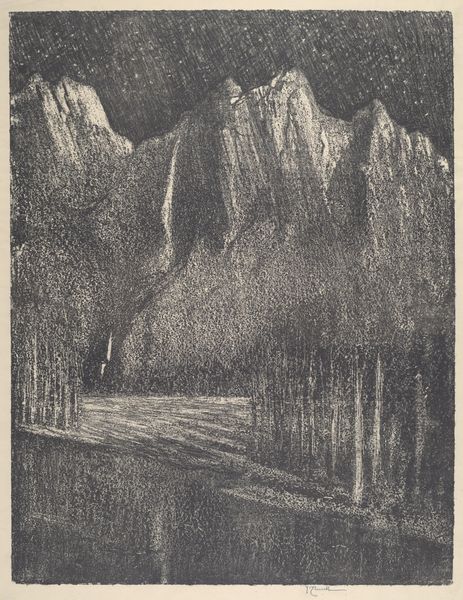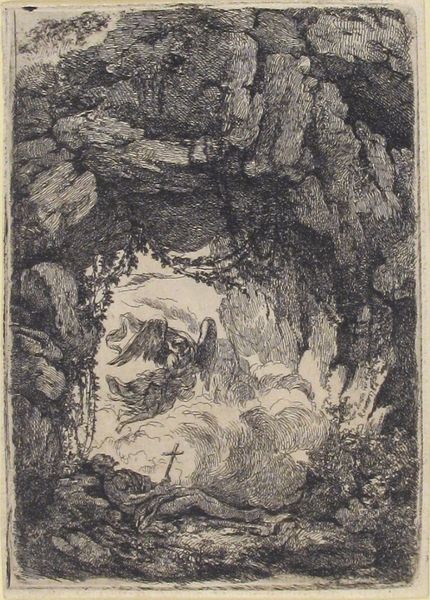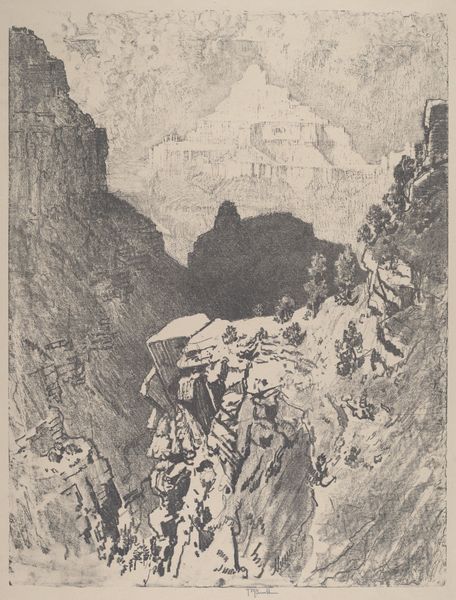
Dimensions: 4 3/4 x 3 1/4 in. (12.1 x 8.2 cm)
Copyright: Public Domain
Rodolphe Bresdin made this small etching, The Crevasse, using a metal plate and etching needles. Look closely, and you can see the build-up of tiny marks, each one carefully dug into the metal. Bresdin then submerged the plate in acid, allowing it to bite into the lines, before inking the surface and using a printing press to transfer the image to paper. In this work, Bresdin used the etching process to create a complex fantasy landscape, where deep shadows and sharp lines conjure a sense of drama. Although the final print is small in scale, it is monumental in its imaginative scope. Note how the density of labor involved has imbued the work with a richness of detail. Bresdin’s prints were relatively inexpensive, so they made art accessible to a wider audience. By focusing on the making of this print, we can understand how the artist used a laborious process to create a landscape that speaks to the social and economic realities of 19th century France.
Comments
No comments
Be the first to comment and join the conversation on the ultimate creative platform.

